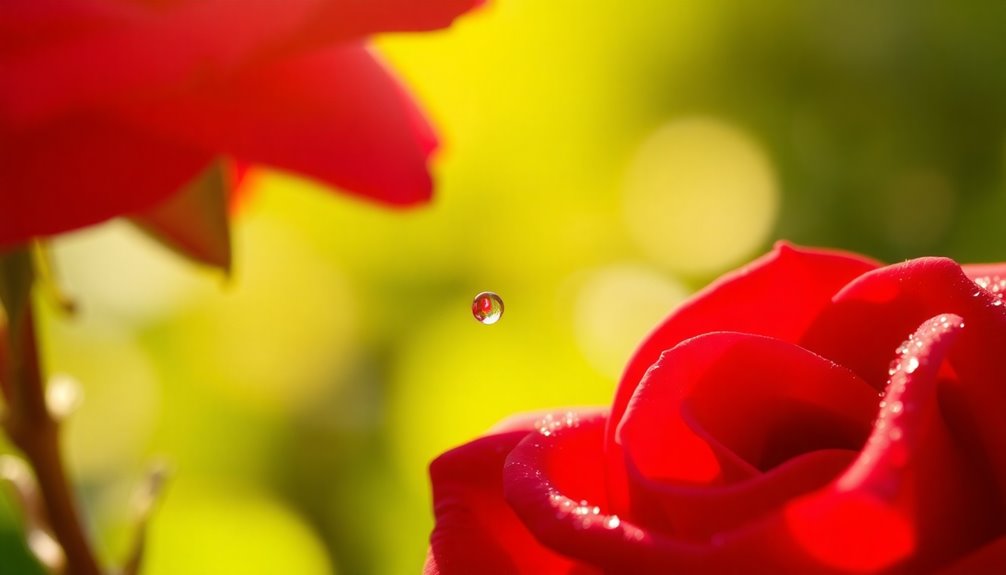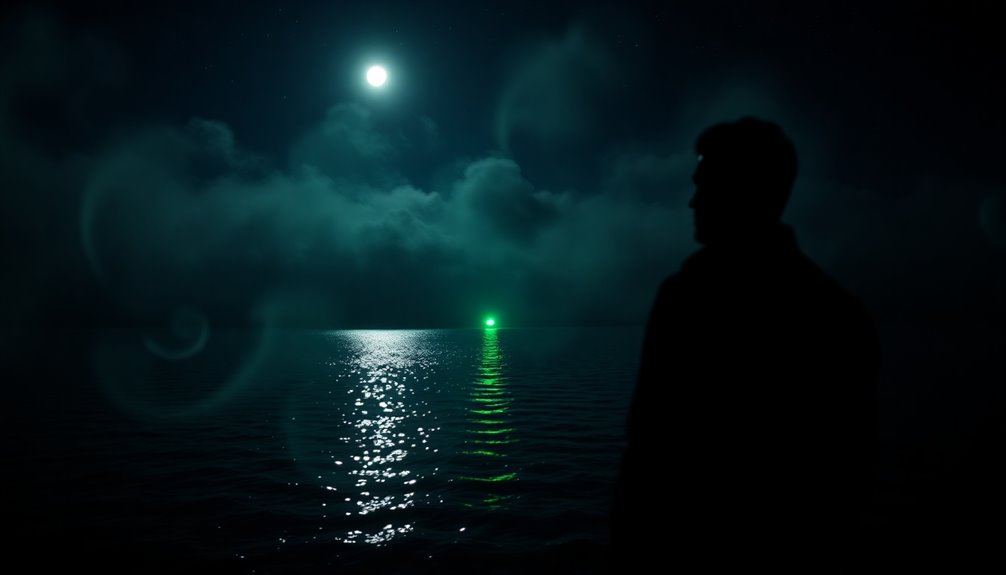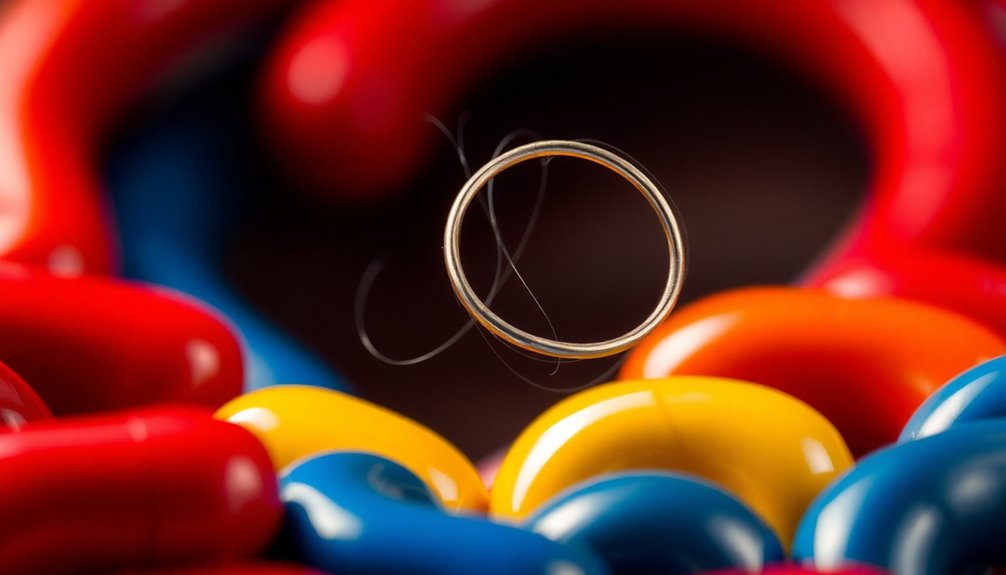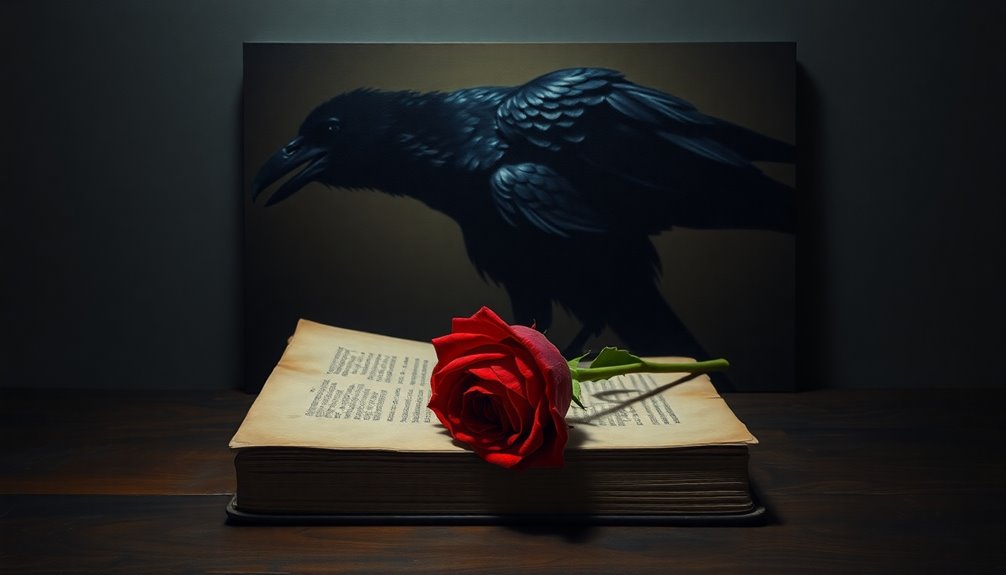The color red is full of exciting meanings! It stands for love and passion in many cultures, but it can also mean danger or power. In China, red brings good luck, while in Western countries, it's often seen during romantic moments. Red makes people feel strong emotions, like excitement or even anger, boosting your heart rate and energy. Athletes wear red to feel more confident, and it can grab attention in fashion and branding. Whether you see it as warmth or caution, red's symbolism is rich and varied. Keep exploring to uncover even more about this vibrant color!
Key Takeaways
- Red symbolizes love and passion in Western cultures, while in China, it represents good fortune and prosperity.
- Historically, red has signified power and wealth, especially during the Middle Ages and Renaissance.
- It evokes strong psychological responses, increasing heart rate and creating feelings of urgency and excitement.
- In social contexts, red conveys dominance and confidence, enhancing attractiveness and authority.
- The color has diverse meanings globally, representing everything from purity in India to danger in other cultures.
Historical Significance of Red
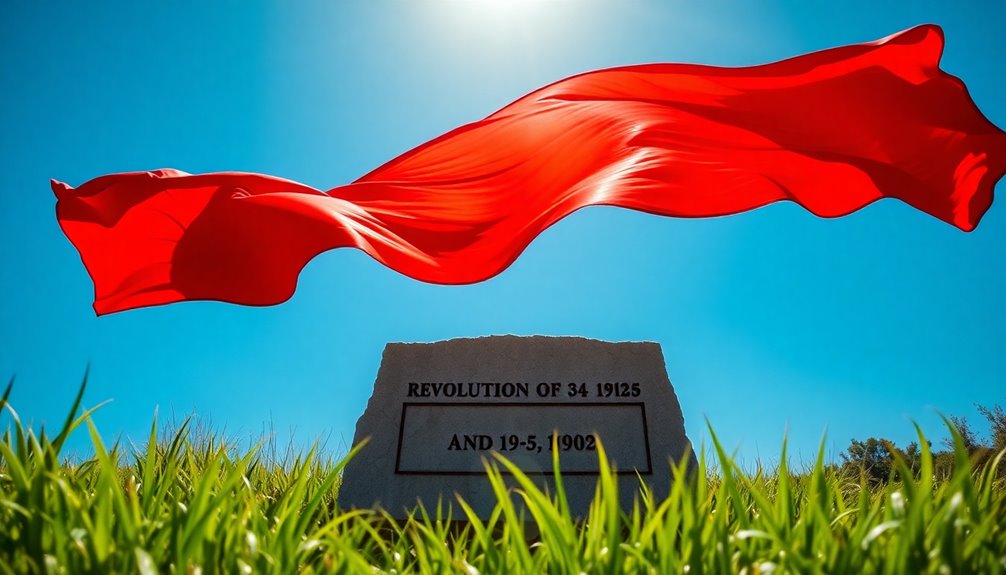
Throughout history, red has played an essential role in art and symbolism, with its origins tracing back to prehistoric times. This vibrant color has a rich historical significance that you can see in many cultures. In ancient times, red was one of the first colors humans mastered, used in cave paintings to express feelings and tell stories.
During the Middle Ages, red took on religious significance. It symbolized Christ's blood and represented power and wealth. You might notice that many important figures in Renaissance art are adorned in red, emphasizing their status and importance.
Fast forward to the 19th century, and red became a symbol of social movements, especially socialism. People used it to rally for change and express their hopes for a better future.
Interestingly, red also has a dual nature. While it represents good fortune and happiness in some cultures, it warns of danger in others. This complexity makes the symbolism of red truly fascinating.
Whether in art, religion, or politics, red's historical significance is everywhere, showing just how powerful this color can be in different contexts.
Psychological Effects of Red
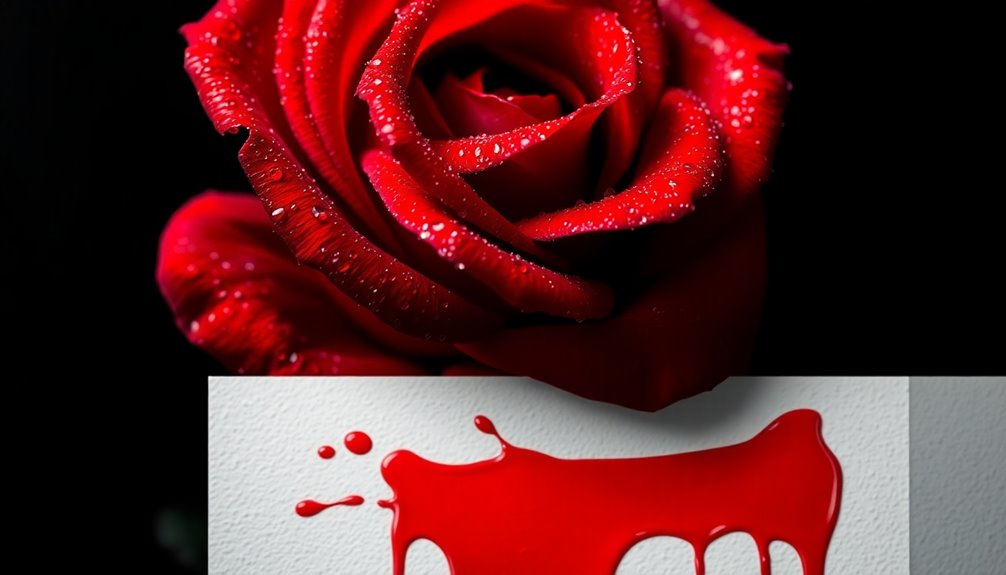
Experiencing the color red can trigger a powerful psychological response that influences your emotions and behaviors. Red color psychology shows that this vibrant hue can increase your heart rate and blood pressure, making you feel more energetic and excited. It often evokes strong feelings, like passion and urgency.
Have you ever noticed how red enhances a competitive spirit? Athletes wearing red tend to perform better, which shows how this color can boost confidence and motivation.
But red's effects aren't always positive. While it can stimulate appetite, making you feel hungry, it can also lead to impulsiveness and risk-taking. You might find yourself making quick decisions without thinking them through.
Red flags indicate caution, reminding you that this color carries both positive and negative meanings.
Culturally, red symbolizes strong emotions, and it can mean attraction or warning, depending on the context.
Emotional Associations With Red
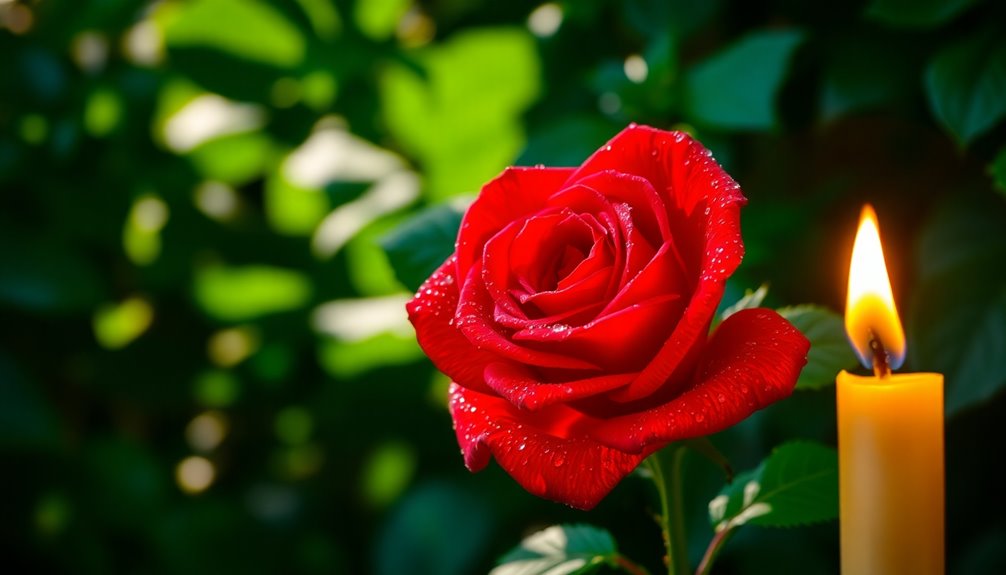
Red is such an exciting color, isn't it?
It's often linked to powerful feelings like love and passion, but it can also signal anger and aggression.
When you think of red, picture how it makes your heart race, whether you're in love or feeling a little fiery!
Passion and Love
When it comes to emotions, few colors evoke the intensity of passion and love like red. This vibrant color symbolizes strong emotions and desires, often seen in hearts and roses. Red captures your attention and stirs feelings of romantic love, making you feel excited and alive. Studies show that when you wear red, others may find you more desirable, which adds to its charm! In many cultures, red is also associated with celebratory events, such as weddings, amplifying its significance in romantic contexts. Additionally, embracing unconditional love can enhance the connection and emotional stability in your relationships. Red is often used in religious celebrations, representing the blood of Christ and the depth of divine love.
Here's a quick look at how red connects with feelings:
| Emotion | Associations | Effects |
|---|---|---|
| Passion | Romantic love | Increases heart rate |
| Strong emotions | Desire | Boosts energy |
| Excitement | Joy | Creates intense feelings |
| Celebration | Good fortune | Evokes happiness |
Red's stimulating nature can make your heart race, enhancing those thrilling moments in love. It's a color linked to energy and excitement, perfect for romantic occasions. While it can also represent anger, let's focus on the joy and passion it brings to your life. In relationships, recognizing signs of stagnation can help you better harness the emotional power of red. So, the next time you see red, remember the warmth and thrill of love it represents!
Anger and Aggression
Intense emotions often surface alongside the color red, with anger and aggression standing out as prominent associations. When you see red, it can spark feelings of excitement but also tension. This stimulating color often brings about physiological responses, like increased blood flow and even redness in your face. You might notice this when someone is really angry!
Red is linked to danger too, which might make you feel alert or cautious. In sports, athletes wearing red are often seen as dominant, showing that this color can influence how we perceive strength and aggression. It's fascinating how a simple color can shape our feelings and reactions!
Research shows that exposure to red can elevate your heart rate and blood pressure, signs that your body is gearing up for action.
So, while red can represent love and passion, it also dives deep into feelings of rage and confrontational impulses. You can see why red is powerful!
Next time you notice red, think about how it connects to anger and aggression, and how it makes you feel. Isn't it amazing how colors affect our emotions?
Red in Social Contexts
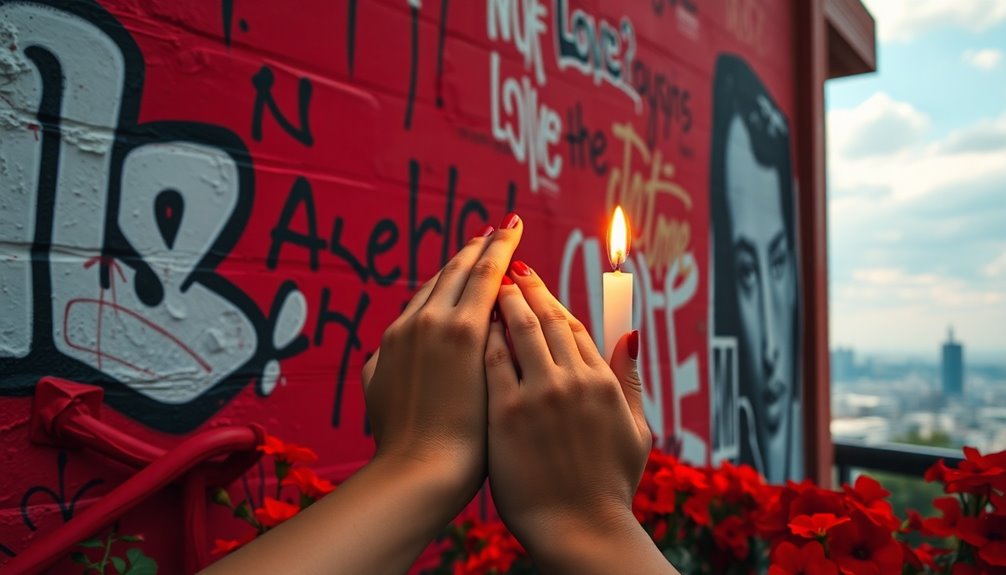
Often, people perceive the color red as a powerful signal in social contexts, influencing how individuals are viewed and treated. When you wear red clothing, it can grab attention and make you seem more dominant and confident. Others often see you as a person of authority and power. This can be especially true in competitive situations.
For instance, athletes in red uniforms have a better chance of winning, thanks to the psychological boost that red provides.
Red isn't just for sports; it's also linked to attraction! Studies show that men find women dressed in red more appealing and desirable. This means that if you're looking to wow someone, a touch of red might do the trick!
However, red has mixed meanings in different cultures. While some see it as a sign of good luck or celebration, others associate it with warning and aggression. This contrast can shape how people interact with each other.
The Red Personality Trait
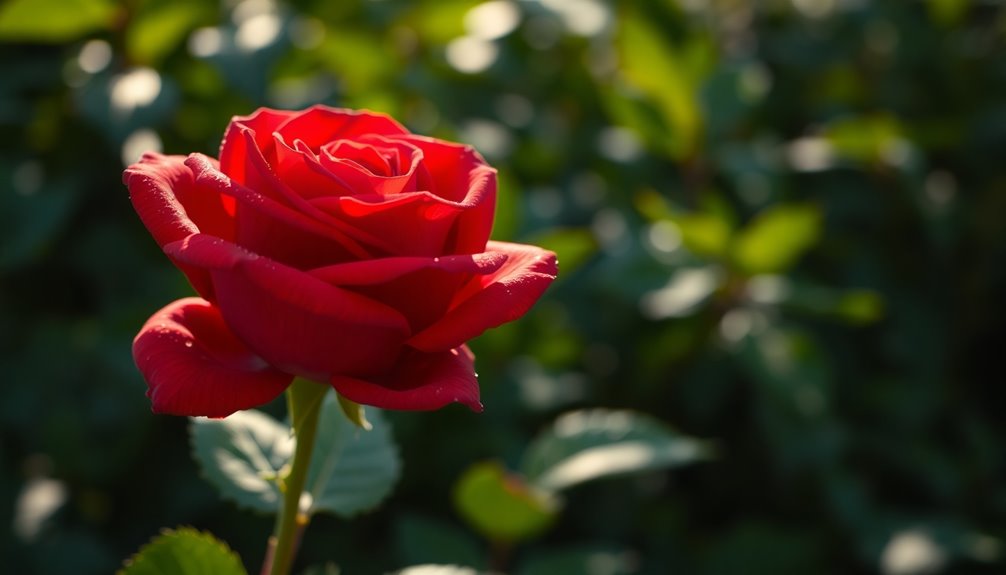
People with a red personality trait are typically seen as energetic, confident, and driven, showcasing natural leadership abilities. You may notice how red personalities often light up a room with their charisma. Their courage inspires others to take on challenges and push boundaries. These traits make them dynamic contributors in schools, teams, and workplaces.
However, it's important to remember that red personalities can have some bumps in the road. Their impulsiveness can lead to quick decisions that mightn't always be the best. Sometimes, their strong emotional responses can spark both passionate pursuits and confrontational moments. This intensity can be overwhelming for those around them.
While they possess fantastic leadership qualities, their competitive nature might overshadow the empathy needed in some situations. Balancing these traits is key!
If you identify with the red personality, embrace your energy and confidence but also work on being mindful of how your actions affect others. By doing this, you can harness your strengths while also growing in areas that promote better connections with those around you. Enjoy the journey of discovering yourself!
Red in Branding and Marketing
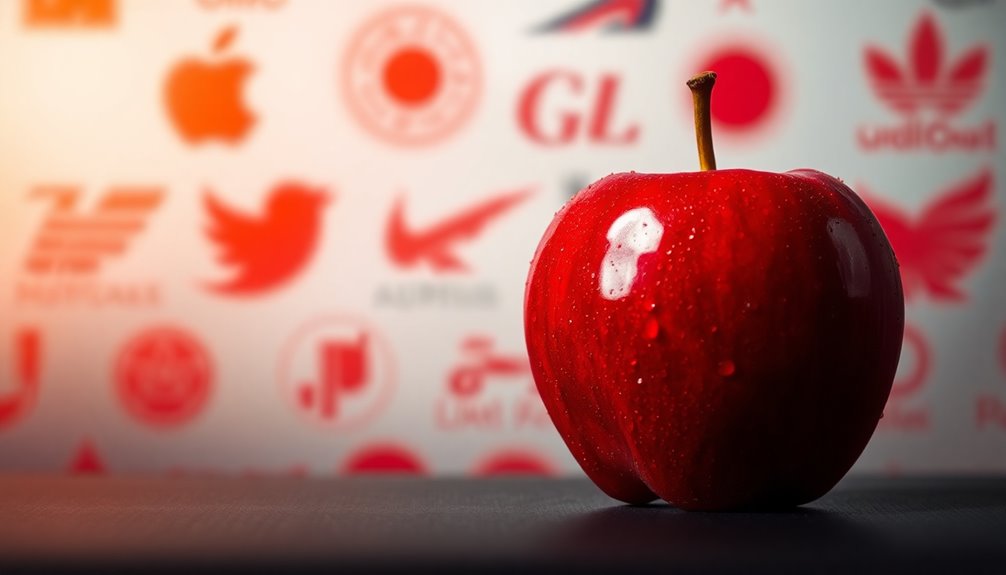
Red is a powerful color in branding and marketing! It grabs your attention and makes you feel excited, which is why many fast food places use it.
Emotional Engagement Strategies
In the domain of branding and marketing, the color red stands out for its ability to evoke powerful emotional responses that drive consumer engagement. When you see red, it grabs your attention! This color can stimulate excitement and even a sense of urgency. That's why many brands use red to encourage you to take action.
Think about Coca-Cola and McDonald's. They use red to create strong emotions and make you feel hungry and happy.
Red isn't just eye-catching; it also helps with focus. Research shows that it can enhance performance on detail-oriented tasks. This makes it a smart choice for places like retail stores and fast food restaurants.
Darker shades, like burgundy, give a feeling of luxury, while brighter reds, like crimson, bring confidence and modernity.
In marketing, red creates a sense of urgency, making you want to act fast. You often see it in sales promotions and limited-time offers.
Color Pairing Techniques
When it comes to making a lasting impression in branding and marketing, color pairing plays a significant role, especially with red. The color red stimulates strong emotions and grabs attention, making it a popular color for brands. Fast food chains often use red because it encourages customers to take action quickly, leading to more sales.
When you pair red with black or white, you create a striking visual that feels sophisticated and luxurious. This combination works well for high-end products, capturing the eyes of consumers.
Bright reds, like crimson, are associated with excitement and high energy, while softer shades, such as cherry, can make your brand feel warm and inviting.
It's important to use red wisely, though. If you use too much, it can overwhelm your audience and lose its special effect. Limiting the shades of red keeps your brand memorable and engaging.
Cultural Interpretations of Red

Across various cultures, the color red carries rich and diverse meanings that can greatly influence traditions and celebrations. You might be surprised to learn how this vibrant color pops up everywhere!
- In China, red symbolizes good fortune and prosperity, especially during Chinese New Year when red decorations fill the streets.
- In Western cultures, red is often associated with love and passion, like the red roses you might give on Valentine's Day.
- In some African cultures, red has a special connection to the spiritual world. It's used in rituals to invoke protection and blessings.
- In India, red is a sacred color, representing purity. Brides wear red during weddings, symbolizing prosperity and fertility.
Red isn't just a color; it's a powerful symbol that carries deep meanings across the globe.
Whether it's love, power, or good fortune, red plays an important role in how we celebrate and connect with each other.
Popular Shades of Red
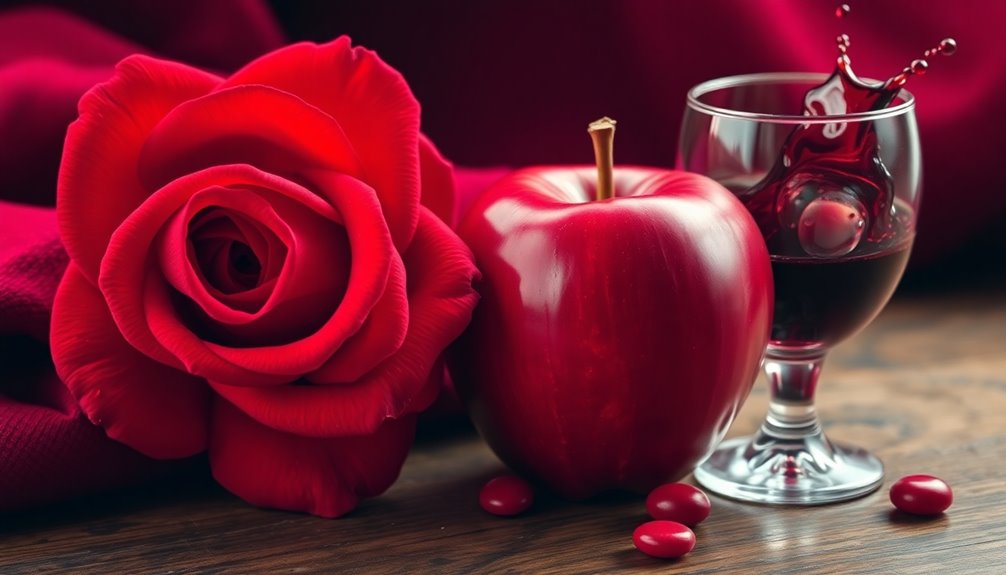
Red isn't just a significant cultural symbol; it also comes in various shades, each with its own unique flair and meaning. Let's explore some popular shades of red together!
First up is maroon. This dark red shade symbolizes attention and is often used by schools and universities to show tradition and prestige.
Then there's scarlet. This bright and vibrant red is full of energy and excitement, making it a favorite in fashion and design.
Next, we've burgundy. This deep red hue exudes sophistication and luxury, perfect for high-end brands and beautiful interiors.
If you want something warm and inviting, cherry is the way to go! This soft red shade creates a friendly atmosphere, making it great for marketing.
Lastly, let's talk about crimson. This bright red color embodies confidence and modernity, often used by sports teams and brands to stir strong emotions.
Each of these shades of red brings its own personality and vibe, adding richness to our lives.
Applications of Red Color Psychology
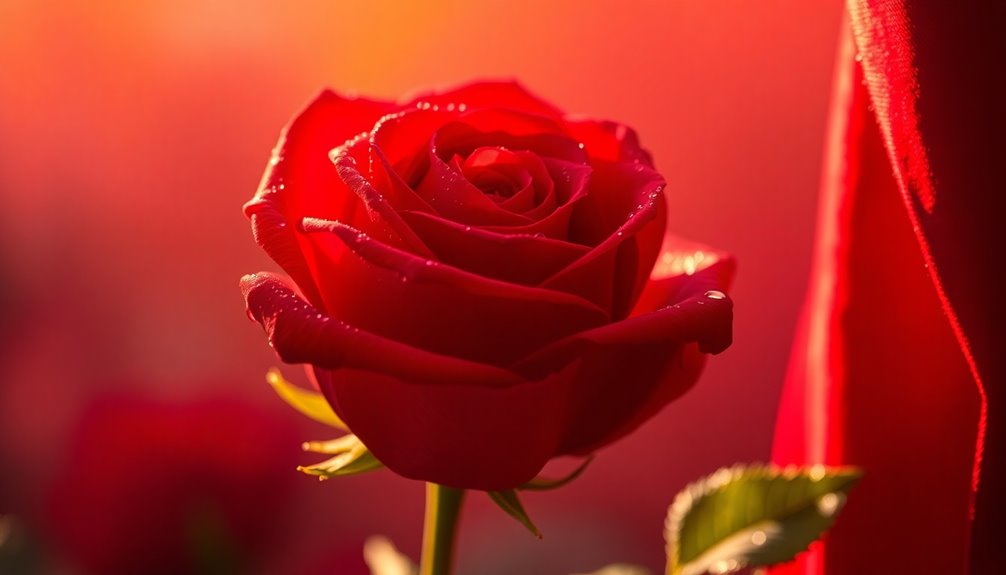
In various fields, the applications of red color psychology play an essential role in influencing emotions and behaviors. You mightn't realize how powerful red can be! It grabs your attention and evokes strong emotional reactions.
Here are some exciting ways red is used:
- Marketing: Brands often use red to attract attention and create excitement, encouraging you to make purchases.
- Interior Design: Red walls can energize a room, making it feel warm and inviting. This promotes lively conversations between friends and family.
- Fashion: Wearing red can boost your confidence and attractiveness. People often see you as more appealing when you rock that vibrant hue!
- Sports: Teams wear red to showcase dominance and intimidate their opponents. It's all about boosting morale and creating a winning spirit!
Understanding color psychology helps improve mood and social interactions.
Frequently Asked Questions
What Does the Color Red Symbolize?
The color red symbolizes many strong feelings! It can represent love, excitement, and even anger.
When you see red, it often grabs your attention, like a stop sign or a fire truck. In some cultures, red stands for good luck and happiness, especially during celebrations.
It's also linked to power and leadership, making it a popular choice for important events.
What Is the Color Theory of Red?
Imagine you're a superhero, and red is your cape! In color theory, red's a warm color that boosts energy and excitement.
It grabs attention quickly, making it perfect for things like stop signs or sale ads. When you see red, your heart might even race faster!
This color can inspire action, too, sparking motivation in sports or challenges.
What Is the Ancient Meaning of the Color Red?
In ancient times, red was a powerful color! It often symbolized life and energy, like the vibrant blood that flows through our veins.
People believed red connected them to divine forces and spirituality. In ancient Rome, it was a color of authority, worn by leaders to show their power.
Plus, it played a big role in stories from the Bible, representing sacrifice and passion.
Isn't it fascinating how such a simple color carries so much meaning?
What Does the Color Red Symbolize in the Bible?
When you explore the color red in the Bible, it's like discovering a treasure chest of meanings!
Red often represents love, passion, and even the sacrifice made for us. It also reminds you of danger, like when the waters turned to blood in Egypt.
Plus, it symbolizes the Holy Spirit's fiery presence!
So, red isn't just a color; it's a powerful symbol of both God's love and the seriousness of sin.
Isn't that exciting?
Conclusion
Ultimately, red is a vibrant color that carries a wealth of meaning! From its historical roots to its emotional power, red can inspire passion and excitement. Remember, "seeing red" can mean different things in different contexts. Whether you love it or fear it, red is a color that makes us feel deeply. So, the next time you see red, think about all the rich stories and feelings it brings to your life!

